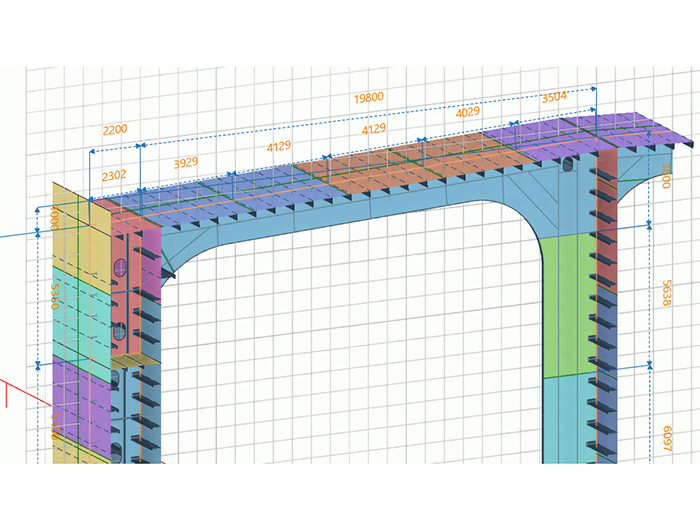
Study confirms viability of 3D model-based plan approval
Written by Nick Blenkey
3D model created using NAPA Designer
Maritime software specialist NAPA, classification society ClassNK, and shipbuilder Japan Marine United (JMU) have completed a joint feasibility study on 3D model-based plan approval (3D MBA) using 3D CAD models.
In the feasibility study, ClassNK conducted a trial evaluation for hull structural design on a 3D CAD model of a 300,000 DWT ore carrier designed and created by JMU, using NAPA Designer, a 3D CAD software application for ship design developed by NAPA, as a 3D model viewer. Plan submission, storage, and notification of examination results were made using the society’s electronic plan examination system NK-PASS.
The investigation concluded that information required for class approval can be confirmed through a 3D CAD model, and that NK-PASS is also compatible with 3D CAD models. The results of this survey will serve as a basis for future technical studies, and ClassNK says it will continue to work with the industry to realize 3D model based plan approval.
The study comes as ship designs are gradually transitioning from 2D drawings to using models in 3D CAD software. This means that classification societies, whose plan approvals are currently based mostly on 2D drawings, are now looking to develop processes and procedures for handling 3D CAD models throughout the approval process.
“3D model-based approval is an essential part of naval architecture’s future. By continuing to rely on 2D drawings the sector wastes hundreds of thousands of manhours each year, as well as increases the likelihood of avoidable errors in their designs,” says Tapio Hulkkonen, NAPA Design Solutions Director, Product Management. “Ships are three dimensional objects, and we need to be able to assess them in every plane. This study demonstrates that the technology is ready to go.”
According to Hulkkonen, “NAPA Designer is the perfect tool for viewing and evaluating 3D designs, enabling designers, engineers and class societies to rely on a single source of truth. 3D model-based approval also opens the door to greater use of digital twins for safety and optimization, where real-world data can be compared against a virtual model of a ship, and vice versa, to identify problems and validate performance data.”
NAPA has long pioneered the shift from 2D to 3D in design and approval, which significantly streamlines the design process, reducing the need to transition designs between 2D to 3D, and reducing errors that can occur in this transition.
“This study has proven the future potential of 3D model based approvals,” says Hayato Suga, Corporate Officer and Director of Plan Approval and Technical Solution Division at ClassNK. 3D based design can be the key to improving digital solutions in the ship industry, including the ship design process, approval process and later fleet maintenance. I hope that the entire industry will also quickly realize the many opportunities and increased efficiency that can be achieved as a result of this initiative. The vessels of the future will be able to accommodate much better and safer designs in shorter amounts of time.”




